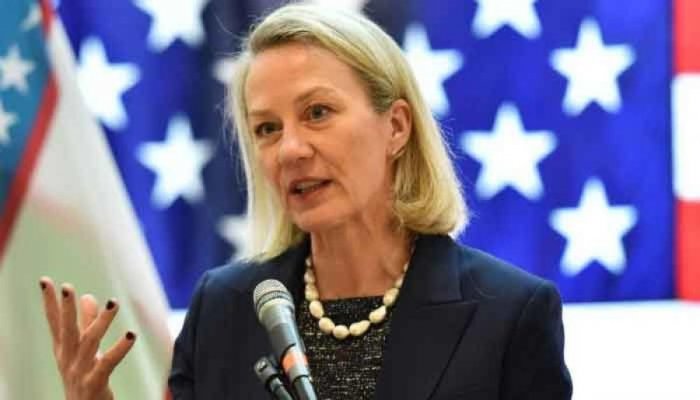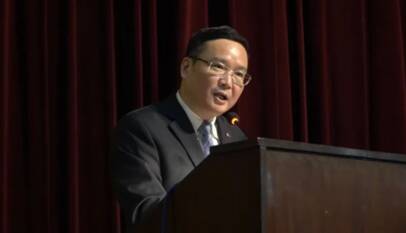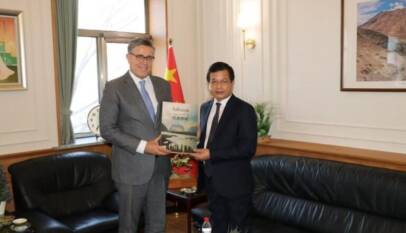Significance of CPEC narrative
Undeniably, the United States (US) seems wary of Chinese expansion and economic growth under the Belt and Road Initiative (BRI), of which CPEC is a flagship project. To sabotage BRI, the US continued to build negative image of CPEC by promoting fabricated information pertaining to CPEC linked investments. Therefore, Pakistan has to work on CPEC narrative building to counter US propaganda against CPEC which has global media outreach.
Alice Wells did it again; demonize BRI and CPEC. Her unwelcome, pointed and repetitive remarks were responded to, both by Chinese and Pakistani sides. The point – the core of it – however, remains unexplained, largely.
The question is why did the senior American diplomat have to repeat in her January 2020 visit to Islamabad, at an Islamabad think-tank, what she had already uttered two months ago at a Washington D.C. one, and it was responded to even then? Was she simply trying to make her point get across, for a wider Pakistani audience?
And was the detailed response from Chinese embassy as well as word from Pakistan’s Foreign Office enough to ally what she intended to put across? No, in case of both the above, larger questions. What she said about CPEC in particular and BRI in general would be heard being repeated again. And again, more so often perhaps, for months and years to come.
Here, we have to borrow a word of wisdom from Robert J. Shiller. The 2013 Nobel Laureate in economics explains quite vividly in his new 2019 book Narrative Economics: How Stories Go Viral and Drive Major Economic Events, as to what is actually at play here, behind Ms. Wells’ tirade.
Shiller tells us in detail that stories, true or false, have a lot of bearing on shaping the economic and financial decisions of people, corporations, institutions and beyond. This has been proved, his research brings up, from the crisis of 1920s, 1930s, and more recently of 2008-09. He even likens the rise of Trump to a case of narratives: a business friendly president.
So what is the story that the US is seeking to initiate and go viral here? That China’s Belt and Road Imitative (BRI) – of which China-Pakistan Economic Corridor (CPEC) is a flagship and most vibrant component – is bad, really very bad, for Pakistan. We are being told, and made to believe, that Pakistan is facing a grave risk of compromising its sovereignty, thanks to massive (as the US sees it) CPEC-accumulated debt.
We are further told and made to believe that it is China and its corporations that are reaping all the benefits and Pakistan, merely, remains at a far receiving end. False it was, false it remains, and we (both China and Pakistan) have made attempts to correct the falsehood of this narrative, with prompt explanations and rebuttals. Is that enough? No, again. And it is NOT a question of presenting pro, and against, data.
Let us not forget that the ‘famous’ New Silk Road Initiative (NSRI) that Hilary Clinton brought forward in 2011 in Chennai is limping, at best, if not having fallen flat by now. The same Ms. Wells was serving as Executive Secretary to Ms. Clinton when NSRI was being pushed vigorously, only to be dwarfed by BRI launched a couple of years later.
The US may not have, and it actually does not have, the financial muscle to match the scope, spread and speed of BRI, including the CPEC component. Yet, there is one dimension where the US is way – perhaps decisively – ahead of China. It is the arena of creating, spreading, and sustaining (for a long time) narratives – true or false. The outreach of the US media backed by a wide-spread network of ‘think-tanks’, academia, NGOs – and not to mention Washington- and/or IFIs-linked senior professionals managing economies and public finances not only in America itself but across the world particularly in BRI-recipient countries all together have a massive ammunition at their disposal. It comprises of information, stories and narratives – huge chunks of the same.
This bombardment would continue, and perhaps would intensify, in months and years ahead as BRI and its major components such as CPEC move towards fruition, leaving American-backed ventures behind. Let us not overlook the highly exaggerated media and social media campaigns highlighting the so-called debt-trap in case of Maldives, Sri Lanka, Tajikistan and some African nations.
Ironic but a reality it is that even the calamities such as CoronaVirus are being used as a fuel for the fire – the fire aimed at demonizing China’s expansion, presence and development cooperation, worldwide.
The larger the cooperation is, the wider would be debate and spread of anti-China narratives. Pakistan is a pertinent example. The point of course is not and should not be to accept whatever is coming from China and emerging out of BRI components such as CPEC, blindly. Every single Pakistan would be interested in transparency, completion, quality and on-the-ground win-win arrangement. That is the only sustainable way forward.
The point here is whether China in particularly and partners countries such as Pakistan are ready and equipped-enough to face the continuity of this onslaught of narratives as well s its potential shapes and outcomes? Seemingly not, expect for the knee-jerk reactions.
Projects and mega-initiatives of this size and scale call for matching investments in research, opinion building and narrative shaping. China and Pakistan have to attend to this aspect of their bilateral cooperation under CPEC, in a well-thought-out, comprehensive and sustainable manner.
Chinese Ambassador highlights significance of Third Plenary Session for China-Pakistan cooperation
The Third Plenary Session of the 20th Central Committee of the Communist Party of China ha…









